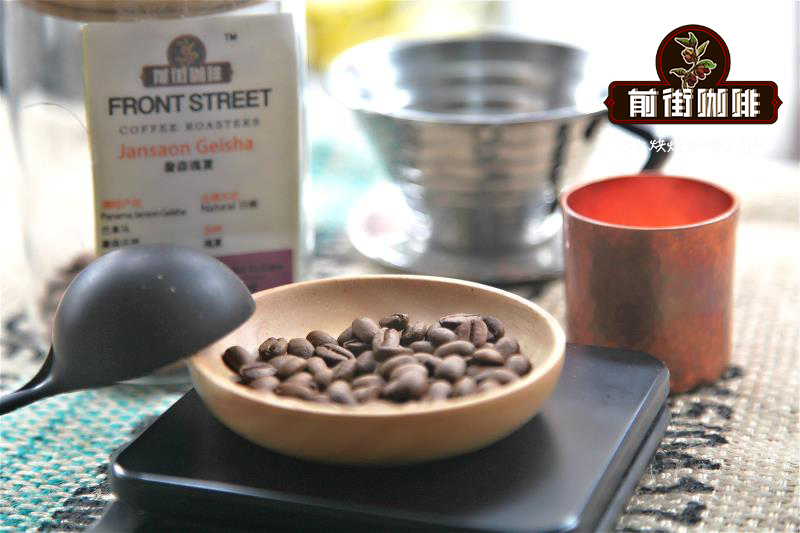Tell you how anaerobic coffee beans ferment? Basic principles and process requirements of Coffee processing

Professional coffee knowledge exchange more coffee bean information please follow the coffee workshop (Wechat official account cafe_style)
Fermentation in coffee
Fermentation is a natural process by which microorganisms such as yeast (Saccharomyces cerevisiae) and bacteria (lactic acid bacteria) consume and metabolize sugars and acids in coffee and cherries, which are eventually decomposed into acids and alcohols.
Why fermented coffee?
Fermentation is very important, it will affect the taste and aroma of coffee. Pectin is made up of sugars, amino acids, precursors of aromatic compounds, etc. If you want to find the potential aroma in coffee beans, you must pay attention to this. Remember how sugars and acids are decomposed during fermentation? It is these same reactions that make up the taste. If sugars and acids are decomposed under controllable conditions and in an appropriate temperature and time range, the flavor and aroma of coffee beans will be better.
The fermentation of coffee
Good fermentation can get the characteristics of coffee, but good fermentation can not improve the quality of coffee, because the quality of coffee is fixed at the time of growth, but we can extract and maintain these good properties. "
Bad fermentation will reduce or produce bad coffee flavor. In the overfermented coffee, what we find is the taste of the wine, and it is the wine that has gone bad. The identification of excessive fermentation of coffee is mainly reflected in the red color of coffee beans and the smell of rotten fruit. For these reasons, the processor must understand the fermentation and control it as much as possible.
Consistency of fermentation
The consistency of fermentation is important for entering the market and repurchasing. The difficulty in the process of fermentation is that it is the result of chemical reactions among microorganisms such as bacteria, yeasts and fungi. These substances are in the soil, in fruits and berries, like spores in the atmosphere. Their reactions change in different environments, affecting the taste and aroma of coffee beans in different ways.
However, the consistency of fermentation can be achieved. Mauricio Villegas, with a doctorate in agricultural engineering, is currently conducting yeast experiments. "it's not random," he told me. "some aspects have to be defined and controlled to achieve more repeatability, and this repeatability will get the same cup test results."
Ensure the consistency and quality of fermentation
In order to control fermentation and ensure the consistency of coffee quality, what factors should producers pay attention to?
one
Coffee cherry quality
The quality of raw materials and coffee cherries is critical, and yeast can only use existing substances to display or enhance specific aromatic compounds because of their different metabolic processes. Plants need minerals, nitrogen and amino acids. The only way is to make a health plan, such as nutrition, plague, disease management, as well as watering, shading and pruning, so that you can get good coffee cherries.
two
Clean
Microbes are not always suitable for coffee. Luiz Roberto said the surface of the coffee cherry is already covered with microbes, as well as soil, harvesting materials, workers' hands and infrastructure for transportation, reception and processing. All these can lead to pollution. Although it is impossible for a farm or factory to be free of a microbe, it will help after cleaning, and the sink should be cleaned after use, as should all tools used.
three
oxygen
There are two types of fermentation: aerobic fermentation and anaerobic fermentation. In aerobic fermentation, the presence of oxygen contributes to the respiration and growth of microorganisms. Aerobic fermentation is a traditional fermentation method, however, it is a difficult process to control. Because microbes are everywhere, oxygen affects the growth of microbes in a way that is difficult to predict and control.
During anaerobic fermentation, Mauricio explained that coffee is usually placed in a closed tank without oxygen and has a valve that releases carbon dioxide, giving producers more control over the chemical reactions that take place.
four
Microorganism-yeast type
Different yeasts and microorganisms have different effects on the fermentation process, depending on the strain used, yeast has different effects on coffee: one that can "enhance the taste and final cup quality of fruity coffee (such as apricot, passion fruit, flower, vanilla); or" bright acidity and citrus, with a lingering finish.
five
Time and temperature
Time and temperature are important, because temperature affects the speed of fermentation.
When the fermentation process of coffee beans takes place below 20oC, I can increase the fermentation to 36 hours. Fermentation tends to occur faster at higher temperatures.
Data and records
Without data records, it will be difficult to follow the same protocol in the future. Every piece of data is useful, from the temperature of the harvest season to the time of the day when coffee is harvested and the length of the fermentation process.
Be sure to measure the PH value and record the sugar level of the coffee, so that you can know not only the sugar content in the coffee, but also the substrate or content on which bacteria and yeasts depend.
"if you don't have data or process, you can't do it again," he said.... Therefore, in order to achieve repeatability, there is no doubt that you must measure and understand the behavior of variables in processing. "
"of course, you have to know the temperature changes or behavior during fermentation, the dynamic changes in sugar content during fermentation, and the dynamic changes in the acidity of pectin during fermentation, because only by understanding these factors can you make a decision and control the whole process."
Coffee beans are all different.
The above six factors are the key to maintaining high-quality coffee, but each batch of beans cannot be treated in exactly the same way.
You can use different fermentation processes, long or short fermentation, high temperature fermentation or low temperature fermentation, fermentation with or without microorganisms.
-- Mauricio
Therefore, we should have a better understanding of coffee when fermenting. Considering the varieties they have and the tastes they usually have. Also make sure you understand the farm, from the soil to the local climate.
If you are in wet or cold areas, solarization or drying may not be a good idea. If the area is dry, sunny and low humidity, you can try drying. Understand how microbes play a role according to these environmental conditions. Fermentation begins with crops and ends with the drying process.
Fermentation is a topic that has not been widely understood, but its impact on the quality of coffee can not be ignored.
END
Important Notice :
前街咖啡 FrontStreet Coffee has moved to new addredd:
FrontStreet Coffee Address: 315,Donghua East Road,GuangZhou
Tel:020 38364473
- Prev

How fine espresso coffee powder is correct | how fine it takes to make espresso powder.
Professional coffee knowledge exchange more coffee bean information Please pay attention to the coffee workshop (Wechat official account cafe_style) thickness should be proportional to the extraction time coffee grinding will directly affect the extraction time and extraction rate. The finer the coffee is ground, the denser the powder layer is, the more coffee powder particles come into contact with hot water, the greater the extraction resistance, the easier it is to prolong the extraction time, and
- Next

Does coffee need to be fermented? what is it? can you still drink coffee when it is fermented? what's the flavor?
Professional coffee knowledge exchange more coffee bean information please follow the coffee workshop (Wechat official account cafe_style) END
Related
- Beginners will see the "Coffee pull flower" guide!
- What is the difference between ice blog purified milk and ordinary milk coffee?
- Why is the Philippines the largest producer of crops in Liberia?
- For coffee extraction, should the fine powder be retained?
- How does extracted espresso fill pressed powder? How much strength does it take to press the powder?
- How to make jasmine cold extract coffee? Is the jasmine + latte good?
- Will this little toy really make the coffee taste better? How does Lily Drip affect coffee extraction?
- Will the action of slapping the filter cup also affect coffee extraction?
- What's the difference between powder-to-water ratio and powder-to-liquid ratio?
- What is the Ethiopian local species? What does it have to do with Heirloom native species?

